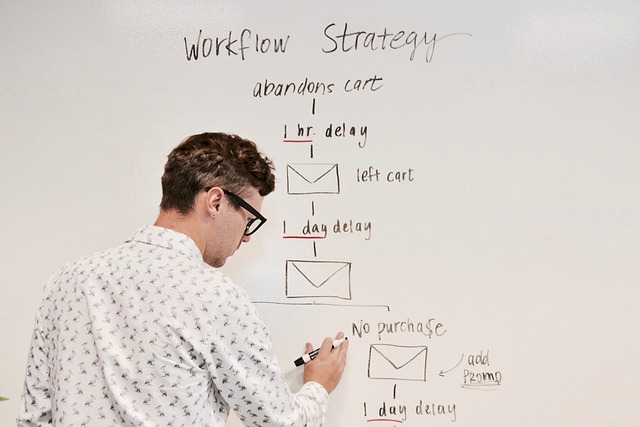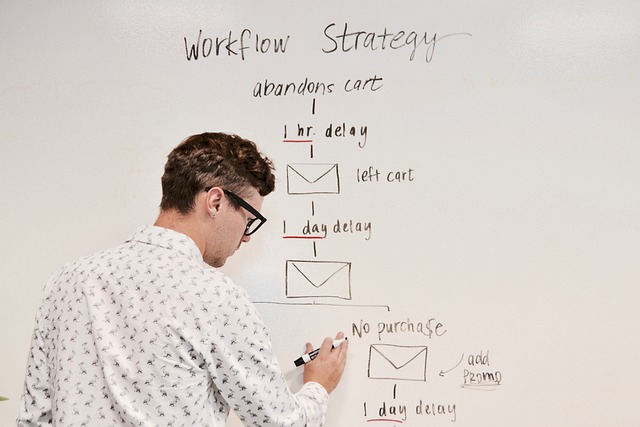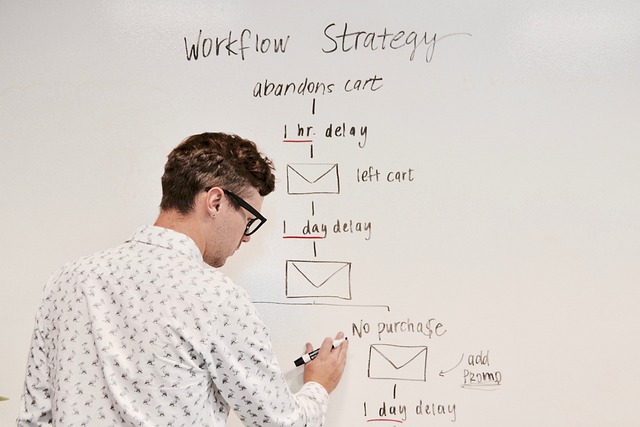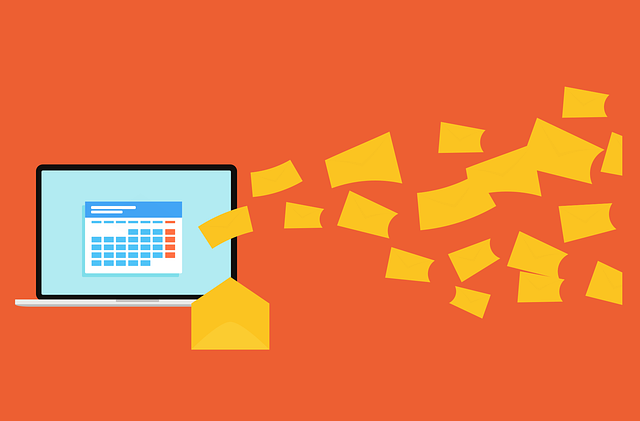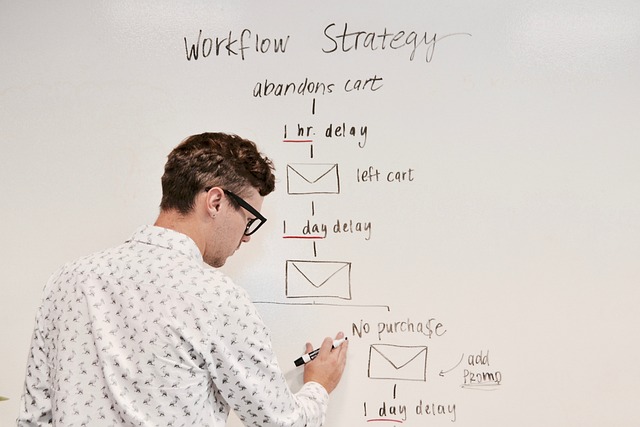Are you tired of spending countless hours manually sending emails, only to receive lackluster results? Well, fear not, because I have just the solution for you.
Introducing ‘The Ultimate Email Automation Guide: Tips and Best Practices’ – your key to unlocking the true potential of email marketing. In this comprehensive guide, we will take you on a journey into the world of email automation, where you will discover the hidden power of streamlining your communication processes.
By harnessing the benefits of automation, you can save time, increase efficiency, and ultimately achieve greater success in your email campaigns. But don’t worry, we won’t just leave you with the theory – we will also provide you with practical tips, step-by-step guides, and real-life examples to ensure you can implement email automation like a pro.
So, get ready to revolutionize your email marketing efforts – let’s dive in!
Key Takeaways
- Save time and increase efficiency with email automation
- Personalize messages based on audience preferences and behaviors
- Choose the right email automation software for your needs
- Measure effectiveness with open rates, click-through rates, and conversions
Understanding the Benefits of Email Automation
Are you tired of spending hours manually sending out individual emails? With email automation, you can save time and effort by setting up automated campaigns that deliver personalized messages to your audience. This allows you to focus on other important tasks.
Email automation offers numerous benefits, including increasing efficiency and improving customer engagement. By automating your email campaigns, you can streamline your workflow and eliminate the need for manual interventions. This not only saves you time but also ensures that your messages are delivered consistently and promptly.
Additionally, email automation allows you to personalize your messages based on your audience’s preferences and behaviors, leading to higher engagement rates.
To ensure you make the most of email automation, the next step is choosing the right email automation software that suits your specific needs and goals.
Choosing the Right Email Automation Software
When choosing the right email automation software, it’s important to consider the features and functionality that will best suit your needs.
Look for software that offers a wide range of features, such as customizable templates, A/B testing, and segmentation options, to ensure you can create dynamic and targeted email campaigns.
Additionally, integration with your existing systems, such as CRM or e-commerce platforms, will make it easier to streamline your workflows and maximize your efficiency.
Features and Functionality
One interesting statistic is that businesses using email automation see an average increase in open rates by 70%. This is because email automation allows for email segmentation and personalized emails, which can significantly improve the effectiveness of your email campaigns. By segmenting your email list based on different criteria such as demographics, purchase history, or engagement level, you can send more targeted and relevant emails to your subscribers. This leads to higher open rates, click-through rates, and ultimately, more conversions. To help you understand the features and functionality of email automation software, here is a table showcasing some common capabilities:
| Feature | Description | Benefit |
|---|---|---|
| Email Segmentation | Divide your email list into smaller groups based on specific criteria. | Send more relevant and personalized emails. |
| Personalization | Customize your emails with personalized content using merge tags. | Make your emails feel more personal and tailored to each recipient. |
| Automated Triggers | Set up triggers based on specific actions or events, such as a new subscriber or a purchase. | Send timely and relevant emails to your subscribers. |
In the next section, we will discuss the importance of integrating email automation with your existing systems.
Integration with Existing Systems
To seamlessly connect your email automation software with your current systems, you can integrate it with your CRM, e-commerce platform, or other tools. This integration allows for a smooth flow of data and streamlined processes.
By integrating your email automation software with your CRM, you can effectively manage your customer data and ensure that all information is up to date and accurate. This integration enables you to create personalized email campaigns based on customer behavior and preferences, resulting in higher engagement and conversions.
Additionally, integrating your email automation software with your e-commerce platform allows you to automate order confirmations, shipping notifications, and personalized product recommendations. This enhances the overall customer experience.
With data management and CRM integration as the foundation, you can now move on to building an effective email automation strategy that will drive results and boost your business.
Building an Effective Email Automation Strategy
Developing a well-crafted email automation strategy is crucial for businesses to effectively engage with their audience and drive successful marketing campaigns. To create an effective strategy, it is important to focus on personalization strategies and measuring effectiveness. Personalization allows you to tailor your emails to individual recipients, increasing the chances of engagement and conversion. Measuring the effectiveness of your email automation strategy is essential to understand what works and what doesn’t. By analyzing metrics such as open rates, click-through rates, and conversions, you can optimize your strategy and improve results over time.
| Personalization Strategies | Measuring Effectiveness | Creating Engaging and Relevant Email Content |
|---|---|---|
| Segment your audience based on demographics and preferences. | Monitor key metrics such as open rates, click-through rates, and conversions. | Craft compelling subject lines and use dynamic content to deliver relevant messages. |
| Use dynamic content to deliver personalized messages. | A/B test different elements of your emails to identify what resonates with your audience. | Incorporate visuals and interactive elements to enhance engagement. |
| Automate personalized follow-up emails based on customer behavior. | Use analytics tools to gain insights into customer behavior and preferences. | Provide valuable and informative content that adds value to your subscribers. |
By implementing these personalization strategies and measuring the effectiveness of your email automation, you can create engaging and relevant email content that resonates with your audience and drives successful marketing campaigns.
Creating Engaging and Relevant Email Content
Craft captivating and compelling email content that captivates and connects with your audience, creating an emotional bond that drives engagement and encourages action.
To achieve this, consider using personalization strategies to make your emails feel tailored to each individual recipient. A few personalization techniques you can try include addressing recipients by their first name, referencing their past purchases or interactions, and segmenting your audience based on their preferences or demographics.
Additionally, use A/B testing techniques to experiment with different subject lines, email formats, and call-to-action buttons to see what resonates best with your audience. By testing and refining your content, you can optimize your email campaigns to deliver the most impactful messages.
Now, let’s move on to optimizing email delivery and timing for even greater success.
Optimizing Email Delivery and Timing
Improve the effectiveness of your email campaigns by optimizing the delivery timing, ensuring that your messages reach your audience at the right moment for maximum impact.
Email frequency plays a crucial role in this process. By finding the perfect balance between sending too many emails and sending too few, you can engage your subscribers without overwhelming them.
A/B testing is a valuable tool that allows you to experiment with different delivery schedules and analyze the results. Test different days of the week, times of the day, and intervals between emails to determine what resonates best with your audience.
By optimizing your email delivery and timing, you can increase open rates, click-through rates, and ultimately, conversions.
Now let’s delve into the next step: tracking and analyzing your email automation campaigns.
Tracking and Analyzing Your Email Automation Campaigns
Mastering the art of tracking and analyzing your email automation campaigns is essential for optimizing your marketing strategy and driving impressive results. By monitoring email performance metrics and measuring ROI, you can gain valuable insights into the effectiveness of your campaigns and make data-driven decisions for improvement. To help you track and analyze your email automation campaigns, here is a simple yet informative table:
| Metric | Description | Importance |
|---|---|---|
| Open Rate | Percentage of recipients who open your email | Measures engagement |
| Click-Through Rate | Percentage of recipients who click a link | Indicates interest and relevance |
| Conversion Rate | Percentage of recipients who take the desired action | Shows campaign effectiveness |
| Return on Investment | Ratio of revenue generated to campaign cost | Measures financial success |
By regularly monitoring these metrics and comparing them to your goals, you can identify areas of improvement and optimize your email automation campaigns for maximum impact. Remember, data is the key to success in email marketing, so make sure to track and analyze your campaigns to drive better results.
Frequently Asked Questions
How can I ensure that my automated emails don’t end up in the recipient’s spam folder?
To improve deliverability and ensure your automated emails don’t end up in the recipient’s spam folder, focus on email authentication. Start by implementing SPF, DKIM, and DMARC protocols to authenticate your emails. These measures prove to ISPs that your emails are legitimate and trustworthy.
Additionally, maintain a good sender reputation by avoiding spammy content, using a reputable email service provider, and regularly monitoring your email deliverability metrics.
Following these practices will increase the chances of your automated emails reaching the recipient’s inbox.
What are some best practices for personalizing automated emails to increase engagement?
To increase engagement in automated emails, it’s important to use segmentation strategies and personalization techniques. Imagine you’re at a party and a stranger approaches you with a generic conversation starter. It’s not engaging, right? The same goes for emails.
Segment your audience based on their interests, preferences, and behaviors. Then, personalize your emails by addressing recipients by their names, offering relevant content, and tailoring the message to their needs. This targeted approach will make your automated emails more engaging and effective.
Are there any legal considerations or regulations I should be aware of when using email automation?
When using email automation, it’s crucial to consider the legal implications and regulations surrounding data protection. To ensure compliance, familiarize yourself with laws such as the General Data Protection Regulation (GDPR) and the CAN-SPAM Act.
Protecting your subscribers’ personal information is essential, so obtain explicit consent before collecting any data. Additionally, provide an easy opt-out option in every email and respect unsubscribe requests promptly.
By adhering to these guidelines, you can maintain trust and avoid potential legal issues.
How can I effectively segment my email list for targeted automation campaigns?
To effectively segment your email list for targeted automation campaigns, start by analyzing your subscriber data. Look for patterns such as demographics, past purchases, or engagement levels.
Then, create specific segments based on these criteria. Use email segmentation strategies like personalization, behavior-based triggers, and dynamic content to tailor your messages to each segment’s interests and needs.
By sending targeted automation campaigns, you’ll increase engagement and conversions, ultimately driving better results for your business.
What are some effective ways to re-engage with inactive subscribers using email automation?
To reactivate your inactive subscribers, implementing win back campaigns is key.
Start by sending personalized emails that remind them of the value you offer. Use attention-grabbing subject lines and offer exclusive incentives to entice them back.
Create a sense of urgency by including limited-time offers.
Additionally, segment your list based on engagement levels to tailor your re-engagement efforts.
Regularly analyze the success of your campaigns and adjust your strategies accordingly to maximize results.
Conclusion
In conclusion, email automation is the ultimate tool to streamline your communication and boost your marketing efforts.
By choosing the right software and implementing a well-crafted strategy, you can deliver engaging and relevant content to your audience at the perfect time.
With optimized delivery and tracking capabilities, you can ensure that your campaigns are reaching the right people and achieving the desired results.
Don’t let coincidence dictate your success, take control with email automation and watch your business flourish.
Start automating today and witness the power of personalized, persuasive emails firsthand.

